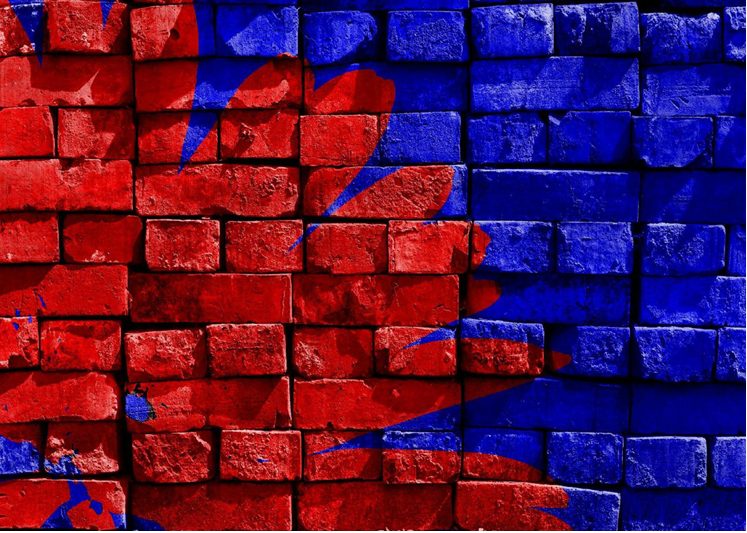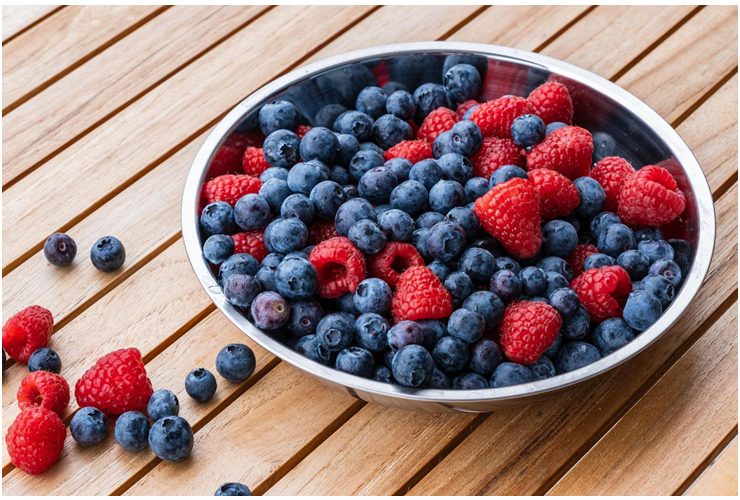There are many colors that will come in even the most standard paint sets, but others we have to make on our own.
When you answer the question of what color does red and blue make, you will have one of those colors.
The combination these two colors make is one that is really popular and that has many uses. It is a color that we see in many funky designs as well as in nature.
But what is this color, how can we make it and what can it be used for? These are all questions we will be answering soon, so let’s begin!
How you can mix red and blue?
As we mentioned in the intro, we have a few questions we will aim to answer in this guide. We will get to all of these answers by the end, but first let’s tackle how you can mix these colors.
This may sound like an easy question, as surely you just grab red and blue and combine them. It’s not quite as simple as that if you wish to do it right, though.
There are many factors to consider before you dive in and start mixing colors. First, you will need to consider the medium you are using.
When it comes to color mixing, paint is the medium of choice for many. No matter what paints you’re using, it will be easy to combine colors together.
Mediums such as pastels can also be good for color mixing, but it’s a little harder to experiment with those. Speaking of experiments, that is a key factor in color mixing.
There will always be a degree to which you can predict the results of your colors, but a large part is a trial and error.
Try to find something that you can play around on such as a piece of wood or cardboard.
Try out different shades of the colors you’re mixing, see what happens and then try to remember the amounts you used of each. Don’t worry, as we will cover the mixing process in greater detail soon.
How you mix the colors will depend heavily on what you’re painting. A monster with neon fur will have very different color tones to the petals of a flower, for example.
We have many tools for achieving the colors you need, and this is another thing we will go over soon. Now that we know how you can mix red and blue, let’s dive deeper into the results that you can expect.
Are red and blue a good combination to mix together?
We have covered how to mix these colors, and now there’s the question of whether it’s even a good idea to begin with.
The short answer is that they are a great combination for a few reasons!
Colors generally come in warm and cool tones, and what we have here is a mixture of both. Red is generally seen as a warm color.
This is easy to understand, as if you think of hot things they will often be red. Fire, the sun and lava are all red, and so it makes sense that red would be considered warm.
On the other side, blue is usually a cool color. It is a color that makes us think of water, ice and mist.
Just looking at these colors will make you feel a certain way, and it can have an emotional impact too. There’s a reason bright and warm colors are used in pictures meant to make us happy.
So what do you get if you mix red and blue? There’s no use keeping it a secret anymore, and the answer to that question is that you will get purple.
Purple is a color that can come in many different forms, but it is generally considered a cool color like blue. It’s a color that is really popular due to how pretty and versatile it is.
Mixing red and blue is great, but you can also use them near to one another to create a nice contrast. We will be covering both of these aspects as we proceed on in the guide.
But to conclude this question, red and blue certainly are a great combination to mix. Now, let’s move on and see how we can mix these colors and what we can expect at the end.
You may be surprised by how many uses this color combination could have!
What results you can expect
So we have answered the question of what color does red and blue make, but what now? We have only really partially answered the question, as there is a lot more to it than that.
If you just find the first tubes of red and blue that you can find and mix them together, you will get a shade of purple. If you want a s specific shade of purple, a bit more thought needs to be put into it.
The shades of red and blue that you use will have a huge impact on how the colors look. While red is warm and blue is cool, sometimes these colors can lean more to the opposite temperature.
What we mean is that you can get a milder, colder red or a sharper, richer shade of blue. When red and blue start having opposite attributes like this, it will affect the shade of purple you end up with.
Later on, we will cover how you can use light and dark shades to get the shades you want, but for now we know that it will be some kind of purple.
It doesn’t have to be a gamble and you don’t have to be content with the first purple you end up with.
You can influence how the result looks and control how it turns out depending on what you need the colors for.
Of course, you can also mix red and blue by using them close to one another. This can create an interesting contrast that can really catch the eye if used properly.
Certain shades of red and blue will go better with each other than others will, so some care needs to be put into the process. It will certainly be worth it when you reach the shade you were hoping for!
This is where practice and experimentation are so important when it comes to getting the shades you like.
You know that you can expect to get purple from the mix of red and blue, but now you may be wondering what you can even use this combination for.
That is what we will be covering in the next step of this guide. After that, we will look more practically at how you can go about mixing these colors to get your ideal purple shades.
Best uses for red and blue mixes
We know what happens when you mix red and blue, but what now? You can create any shade of purple that you need but what can you do with this combination?
The short answer to that is anything you like! Purple is an interesting color because it can have a very synthetic and man-made feel to it but we also see it in nature.
Let’s cover both aspects of the color before moving on. We mentioned that purple can appear very synthetic, and it is used in many facets of design.
Purple is usually a really rich and expressive color that can be used to express feelings of love and warmth. It’s very common in Valentine’s Day cards and anything to do with romance.
However, it is also common for bedroom designs and anything that’s meant to be vibrant and funky. For this reason, it will often be combined with the color pink.
If you’re making a fun banner or a logo or simply painting a room, you may consider using purple. So that is one aspect of the color, what is the other?
We find purple a surprising amount in nature. You may find some pretty flowers that have purple petals. These will be common to give to a loved one to express one’s affection.
It can also be found on certain animals. You can see purple on the feathers of some exotic parrots and birds or even on some poisonous frogs.
It’s not the most common color in nature, but it is certainly not unheard of either! This goes to show that you may have many reasons to need purple.
Maybe you’re painting a pretty bird or designing a banner for school. These are just two of the uses you may have for combining red and blue, but it could be anything!
The point is that red and blue are a fantastic combination whether mixed or used together. Now that we know that, the last thing to cover is how you mix these colors to get the shades you want.
That is what we will cover next as we look at some practical tips for mixing colors.

Lighter and darker red and blue mixes
We have covered how and why you might want to mix red and blue, and for this final tip we will look at the best ways to do it. As we mentioned, purple is not just one flat color.
You can get purples that are light, some that are dark and even shades that are warmer or cooler.
Earlier, we mentioned that it does not have to be a gamble and that you can actually control it more than you think.
The shades of purple you aim for will depend heavily on what it is you’re painting. If you need purple for a parrot’s feathers, for example, you should look closely and try to determine the tones of the colors.
First, try and pick red and blue that you think will get you the closest to the tone you need. If you don’t end up with it, there is still lots to try!
Maybe it’s just a bit too light, in which case you can add little bits of black paint to make it darker. You should definitely try to do this in moderation though.
If it’s too dark, then little drops of white may be what the doctor ordered. These are not the only colors to use, though.
Maybe the purple you need has a bluer tone to it in which case you should add drops of blue. Or, you may need a greener tone to the colors.
This is where it’s so important to have something you can practice on. Once you have experimented on another surface, you will know how to make the color and use it on your painting.
You have everything you need now, so it’s time to get experimenting! Grab your medium of choice, take everything we have covered into consideration and then you too will be able to create beautiful purples.
It would be wonderful to see all of the ways you are able to use this amazing color combination in your artwork.
In summary
Now we know the answer to what color does red and blue make, and it is up to you to decide what to do with that answer!
We have covered some of the places you can find purple as well as how you can tweak it to look as you wish.
Remember to try out all of your favorite mediums, as these can also influence the look of the colors.
Then, experiment with different shades and intensities until you have the colors you want.
Also, look closely at the subject you want to paint and try your best to arrive at the color tones you are looking for.



